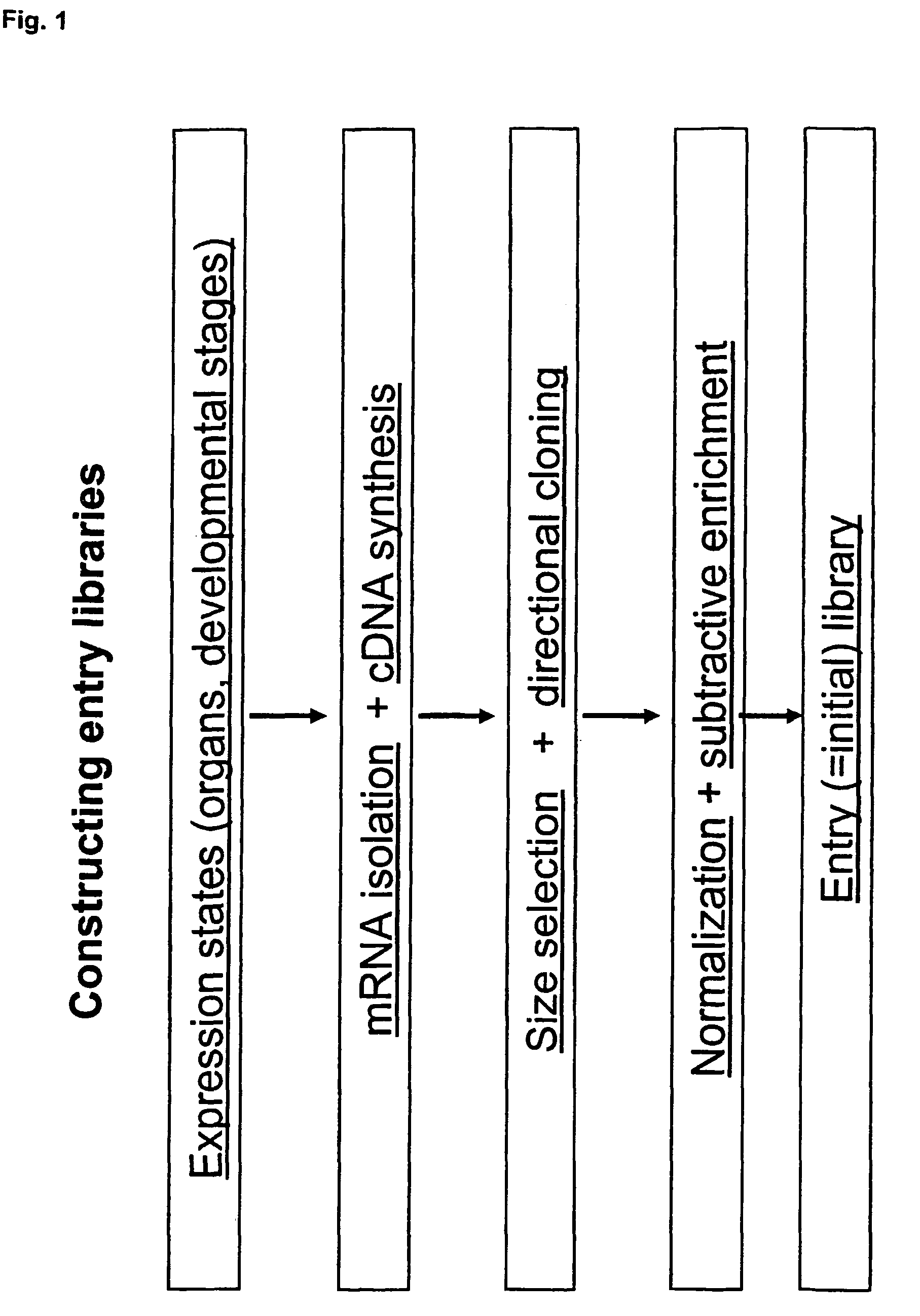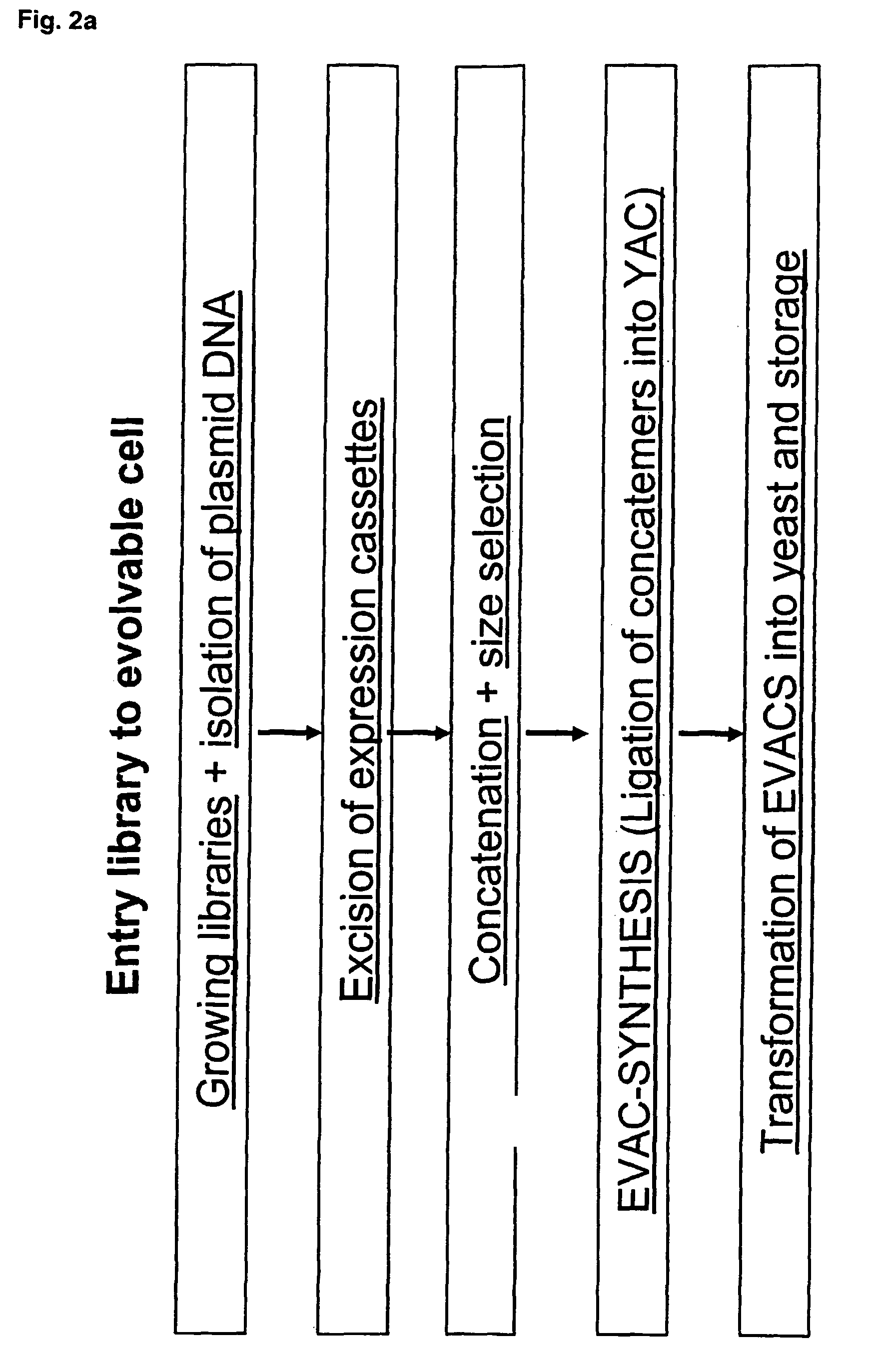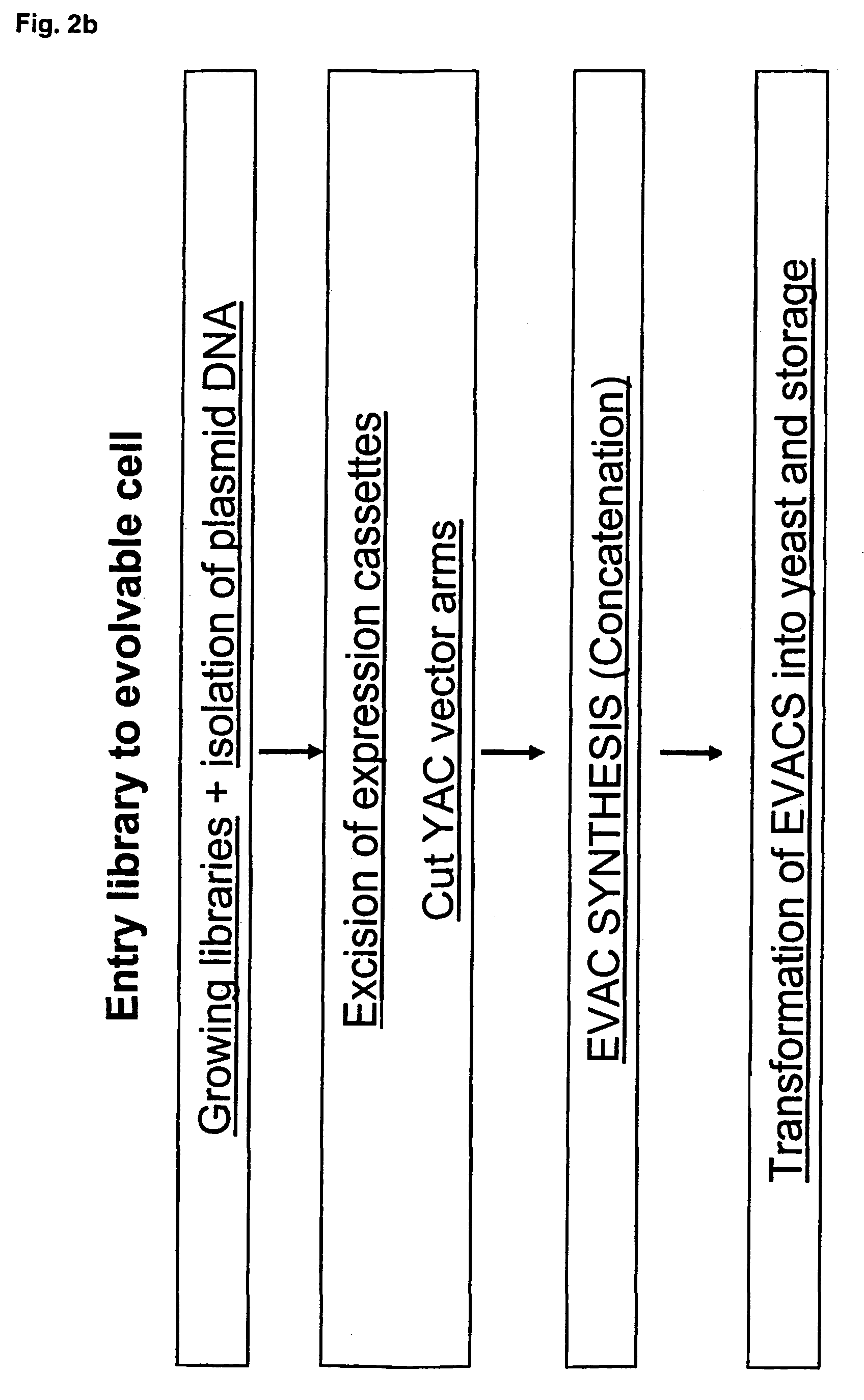Library of a collection of cells
a cell collection and gene technology, applied in the field of combinatorial gene expression libraries, can solve the problems of large chance, heterologous genes are lethal or sub-lethal to the cell,
- Summary
- Abstract
- Description
- Claims
- Application Information
AI Technical Summary
Benefits of technology
Problems solved by technology
Method used
Image
Examples
example 1
[0314]In the examples 1-3 an AscI site was introduced into the EcoR1 site in pYAC4 (Sigma, Burke DT et al. 1987, Science vol 236, p 806), so that sticky ends match the AscI site(=RS2 in general formula of this patent) of the cassettes in pEVE vectors
Preparation of EVACs (EVolvable Artificial Chromosomes) Including Size Fractioning
Preparation of PYAC4-Asc Arms
[0315]1. inoculate 150 ml of LB (sigma) with a single colony of E. coli DH5α containing pYAC4-Asc[0316]2. grow to OD600˜1, harvest cells and make plasmid preparation[0317]3. digest 100 μg pYAC4-Asc w. BamHI and AscI[0318]4. dephosphorylate fragments and heat inactivate phosphatase(20 min, 80 C)[0319]5. purify fragments(e.g. Qiaquick Gel Extraction Kit)[0320]6. run 1% agarose gel to estimate amount of fragment
Preparation of Expression Cassettes[0321]1. take 100 μg of plasmid preparation from each of the following libraries[0322]a) pMA-CAR[0323]b) pCA-CAR[0324]c) Phaffia cDNA library[0325]d) Carrot-cDNA library[0326]2. digest w. S...
example 2
Preparation of EVACs (EVolvable Artificial Chromosomes) with Direct Transformation
Preparation of pYAC4-Asc Arms
[0351]1. inoculate 150 ml of LB with a single colony of DH5α containing pYAC4-Asc[0352]2. grow to OD600˜1, harvest cells and make plasmid preparation[0353]3. digest 100 μg pYAC4Asc w. BamHI and AscI[0354]4. dephosphorylate fragments and heat inactivate phosphatase(20 min, 80 C)[0355]5. purify fragments(e.g. Qiaquick Gel Extraction Kit)[0356]1. run 1% agarose gel to estimate amount of fragment
Preparation of Expression Cassettes[0357]1. take 100 μg of plasmid preparation from each of the following libraries[0358]e) pMA-CAR[0359]f) pCA-CAR[0360]g) Phaffia cDNA library[0361]h) Carrot cDNA library[0362]2. digest w. SrfI (10 units / prep, 37 C overnight)[0363]3. dephosphorylate (10 units / prep, 37 C, 2 h)[0364]4. heat inactivate 80 C, 20 min[0365]5. concentrate and change buffer (precipitation or ultra filtration),[0366]6. digest w. AscI. (10 units / prep, 37 C, overnight)[0367]7. adj...
example 3
Preparation of EVACs (EVolvable Artificial Chromosomes) (Small Scale Preparation)
Preparation of Expression Cassettes
[0387]1. inoculate 5 ml of LB-medium (Sigma) with library inoculum corresponding to a 10+ fold representation of library. Grow overnight[0388]2. make plasmid miniprep from 1.5 ml of culture (E.g. Qiaprep spin miniprep kit)[0389]3. digest plasmid w. SrfI[0390]4. dephosphorylate fragments and heat inactivate phosphatase(20 min, 80 C)[0391]5. digest w. AscI[0392]6. run 1 / 10 of reaction in 1% agarose to estimate amount of fragment
Preparation of pYAC4-Asc Arms[0393]1. inoculate 150 ml of LB with a single colony of E. coli DH5α containing pYAC4-Asc[0394]2. grow to OD600˜1, harvest cells and make plasmid preparation[0395]3. digest 100 μg pYAC4-Asc w. BamHI and AscI[0396]4. dephosphorylate fragments and heat inactivate phosphatase(20 min, 80 C)[0397]5. purify fragments(E.g. Qiaquick Gel Extraction Kit)[0398]6. run 1% agarose gel to estimate amount of fragment
Preparation of EVA...
PUM
| Property | Measurement | Unit |
|---|---|---|
| volume | aaaaa | aaaaa |
| pH | aaaaa | aaaaa |
| solubility | aaaaa | aaaaa |
Abstract
Description
Claims
Application Information
 Login to View More
Login to View More - R&D
- Intellectual Property
- Life Sciences
- Materials
- Tech Scout
- Unparalleled Data Quality
- Higher Quality Content
- 60% Fewer Hallucinations
Browse by: Latest US Patents, China's latest patents, Technical Efficacy Thesaurus, Application Domain, Technology Topic, Popular Technical Reports.
© 2025 PatSnap. All rights reserved.Legal|Privacy policy|Modern Slavery Act Transparency Statement|Sitemap|About US| Contact US: help@patsnap.com



